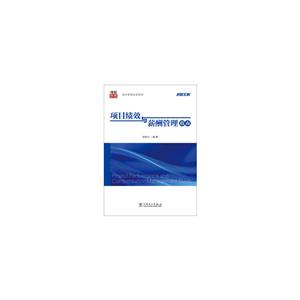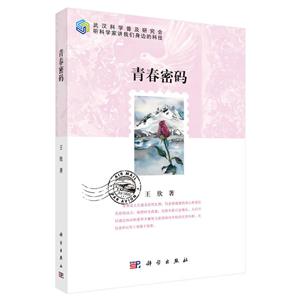海河水资源与水环境综合管理项目研究成果与应用

|
海河水资源与水环境综合管理项目研究成果与应用作者:环保部环境保护对外合作中心 开 本:16开 书号ISBN:9787511106179 定价:86.0 出版时间:2012-12-22 出版社:中国环境出版社 |
海河水资源与水环境综合管理项目研究成果与应用 本书特色
《海河水资源与水环境综合管理项目研究成果与应用(英文版)》(作者环保部环境保护对外合作中心、中国灌溉排水发展中心、水利部海河水利委员会)是“海河流域水资源与水环境综合管理项目”的集成和总结。包括水资源与水环境综合管理规划系列;流域、子流域级的战略行动计划、知识管理系统;水资源与水环境综合管理模型、各种管理工具;战略研究系列和各种专题研究、示范项目等。这些将成为流域综合管理的重要工具和指导依据,并得以向项目区以外的流域和区域推广。
海河水资源与水环境综合管理项目研究成果与应用 目录
chapter 1 overview of hal river basin and bohai sea1.1 bohai sea - the context
1.1.1 physical and biological environment of bohai sea and bohai bay
1,1.2 exploitation of natural resources of bohai sea
1.1.3 environmental pressures on bohai sea and bohai bay
1.2 hai river basin
1.2.1 socio-economic profile
1.2.2 environment
1.2.3 evapotranspiration (et)
1.2.4 social and economic situation in hai river basin
1.3 institutional situation and legal framework
1.3.1 the basin management system
1.3.2 analysis of the problems of the present management system
1.4 planning system in hai river basin
1.4.1 plan types
1.4.2 planning procedures
chapter 2 project content and technology roadmap
2.1 the gef hai river project
2.2 project objectives
2.2.1 geographical scope
2.2.2 project goals
2.2.3 specific objectives
2.3 overall project technical framework
2.4 management of the project
2.5 technical quality
2.6 peformance management
2.6.1 project monitoring and evaluation management system
2.6.2 indicator system for project monitoring and evaluation
2.7 capacity building
2.7.1 top-down, bottom-up and horizontal management principles
2.7.2 training
2.7.3 baseline survey
chapter 3 conceptual innovations and three technologies
3.1 new concepts -iwem
3.1.1 iwem in action
3.2 new technologies in gef haihe project
3.2.1 remote sensing for et management
3.2.2 knowledge management (km).
3.3 river coding
3.3.1 the stream reach as the fundamental unit of a surface water knowledge base
3.3.2 characteristics of the river coding system
3.4 et management
3.4.1 remote sensing estimate of et
3.5 development and application of the swat model and dualistic model
3.5.1 swat model in zhangweinan sub-basin
3.5.2 swat model of hai river basin
3.5.3 development and application of dualistic model
chapter 4 strategic studies for water resources and water environment and the demonstration projects
4.1 introduction
4.2 strategic study of institutional mechanisms, policies and regulations
4.2.1 overall objective
4.2.2 suggestions for iwem policies in hai river basin
4.2.3 improving the legal framework
4.2.4 suggestions on institutional reform for iwem in hai river basin.
4.2.5 implementation plan for reform
4.3 strategic studies on water resources
4.3.1 ss4: efficient water use and water savings
4.3.2 ss5: sustainable utilization of groundwater, water rights, and wate withdrawal permitting
4.3.3 ss6: wastewater recycling
4.3.4 ss8: reasonable water allocation in beijing after the south-north water transfer
4.4 strategic studies on water pollution control
4.4.1 ss2: iwem strategy for the bohai sea
4.4.2 strategic study 3: water ecological restoration
4.4.3 strategic study 7: control of pollution sources
4.4.4 rural non-point source(nps) pollution
4.5 demonstration projects
4.5.1 demonstration projects of water resources management
4.5.2 water pollution control demonstration projects
chapter 5 integrated water resources and environment management plans (iwemps)
5.1 overview of integrated water resources and environment management planning
5.2 tianjin municipality iwemp
工业技术 环境科学 环境保护管理
在线阅读
- 最新内容
- 相关内容
- 网友推荐
- 图文推荐
上一篇:模拟电路答疑解惑与典型题解
下一篇:通风空调设计常见问题解析
零零教育社区:论坛热帖子
| [高考] 2022 西安电子科技大学《软件工程》大作业答案 (2022-04-25) |
| [家长教育] 孩子为什么会和父母感情疏离? (2019-07-14) |
| [教师分享] 给远方姐姐的一封信 (2018-11-07) |
| [教师分享] 伸缩门 (2018-11-07) |
| [教师分享] 回家乡 (2018-11-07) |
| [教师分享] 是风味也是人间 (2018-11-07) |
| [教师分享] 一句格言的启示 (2018-11-07) |
| [教师分享] 无规矩不成方圆 (2018-11-07) |
| [教师分享] 第十届全国教育名家论坛有感(二) (2018-11-07) |
| [教师分享] 贪玩的小狗 (2018-11-07) |






